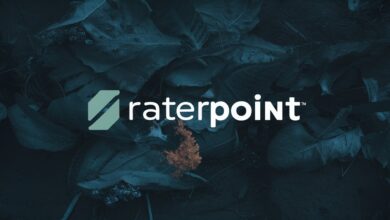DLP Meaning: Understanding Data Loss Prevention Software for Modern Businesses

Introduction
Sensitive company data faces continuous threats from cyberattacks as well as from employee mistakes and inner workforce misconduct that put the organization at risk in digital workplace environments. Organizations need Data Loss Prevention (DLP) software as their essential solution to secure confidential data while staying compliant and avoiding damaging data breaches. The fundamental question begins with what dlp represents as technology while it operates.
This comprehensive article explains data loss prevention technology and its main elements in addition to showing the advantages of this solution alongside how organizations should meet compliance demands while implementing DLP solutions effectively. The reasons why DLP software becomes vital for businesses across all industries and sizes will become clear by the close of this explanation.
What Is Data Loss Prevention Software? (DLP Meaning)
The security tool known as Data Loss Prevention (DLP) software enables detection along with monitoring and authorization prevention for sensitive information. DLP solutions handle the protection of essential information which includes customer records together with financial data and intellectual property.
Why It Matters
- Prevents Data Breaches: Data breaches are prevented by the system from occurring both accidentally and intentionally.
- Ensures Compliance: Organizations use the system to comply with GDPR and HIPAA as well as GDPR and CCPA and other mandated regulatory standards.
- Boosts Productivity: The system protects productivity by minimizing security threats while permitting easy staff workflow operations.
- Mitigates Insider Threats: The functionality of this system identifies damaging acts and dishonest or careless conduct from staff members and outside parties.
Businesses gain better perception of how this technology protects them from security risks by understanding dlp meaning while remote work and cloud computing continue to grow.
Key Features of DLP Software
The current version of DLP software contains advanced functions that fight against new security threats. Here are the must-have features:
1. Insider Threat Prevention
The primary security dangers will always be found inside a company’s workforce. DLP software creates user activity alerts to identify abnormal staff actions that include unapproved file dispersals and nonstandard logon efforts and security protocol workarounds.
2. Data Misconduct Detection
Organization policies face violation when employees either through mistake or purposefully distribute confidential files through email and cloud storage solutions and external devices. DLP solutions detect such violations automatically so IT teams can take immediate corrective action.
3. User Behavior Analytics (UBA)
Artificial intelligence technology in DLP software identifies unusual employee activities by reviewing their behavioral data patterns. An instant alert for further assessment will be generated by the system when an employee begins to download unusually large data quantities.
4. Continuous Data Monitoring
Online data transfers through a combination of endpoints and networks and cloud applications require additional protection from removable storage devices. DLP solutions execute real-time tracking of data movement to verify the permanent protection of sensitive information.
5. Employee Monitoring (Ethical Use)
Security needs employee monitoring yet such observation needs to follow ethical standards. The DLP software ensures visibility through its tracking of business operations while following privacy rules.
DLP software stands as a strong data protection tool because of its capabilities.
Why Businesses Need Data Loss Prevention (What Is Data Loss Prevention’s Role?)
Data loss prevention comprehension transcends definition work because it requires authentic recognition of security and operational effects.
1. Protects Against Internal Threats
- Malicious Insiders: The unauthorized transfer of organizational information occurs because of employee data theft during corporate espionage activities and personal profit schemes.
- Unintentional Leaks: Accidental sharing of sensitive files due to human error.
2. Enhances Compliance
- Automates compliance reporting for audits.
- The system prevents regulatory violation penalties including those under the GDPR regulations.
3. Secures Remote Workforces
- Monitors data access across devices and locations.
- The solution stops security breaches which occur in hybrid workplaces.
The increasing number of cyber threats makes DLP software mandatory instead of optional.
Compliance and Privacy Considerations
While DLP solutions enhance security, businesses must implement them ethically:
1. Follow Data Protection Laws
- GDPR (EU): Requires explicit consent for employee monitoring.
- HIPAA (Healthcare): Mandates strict protection of patient records.
- CCPA (California): Ensures transparency in data collection.
2. Balance Security & Privacy
- Only high-risk data should be the target for surveillance measures while surplus surveillance is to be avoided.
- When reporting data it is essential to use anonymous methods which protect employee privacy.
The right application of DLP software acts as a security enhancement tool which upholds employee privacy without impacting trust levels.
Use Cases Across Industries
Different sectors benefit from data loss prevention software:
1. Healthcare
- Protects patient records (HIPAA compliance).
- The security system restricts unauthorized access to health-related information.
2. Finance
- Transaction plus credit card information remains protected along with corresponding documentation.
- Monitors for fraudulent employee activity.
3. IT & Technology
- Safeguards intellectual property and source code.
- Prevents leaks from third-party vendors.
Every sector has its own distinct risks which make the DLP software adaptable to different environments.
Choosing the Right DLP Software
Selecting the best DLP solution depends on several factors:
1. Scalability
- Does the tool provide the capability for your business to develop alongside your expanding operations?
- Does it support multi-location deployments?
2. Integrations
- Does it work with existing tools (e.g., Microsoft 365, Google Workspace, Slack)?
3. User-Friendliness
- Does the interface support simple operation between IT professionals and personnel who are not part of the IT department?
- Does the platform provide both automatic alert systems as well as reporting functionalities?
4. Deployment Options
- Cloud-based, on-premise, or hybrid?
- Does one security model better suit your present needs?
The selection of vendors is based on these considerations to find a suitable choice.
Best Practices for Implementation
To maximize DLP software effectiveness:
- Start with a Risk Assessment – First evaluate the risk factors to detect valuable information while recognizing system weaknesses.
- Define Clear Policies – Detail All Policies for Understanding – Establish specific definitions of what counts as a violation against these rules. How will alerts be handled?
- Train Employees – Employees should receive training about security protocols and acceptable use because their understanding improves DLP software effectiveness.
- Monitor & Adjust – The rules must be continuously updated by scanning alerts and incidents for proper refinement.
The implementation of phased deployment helps organizations execute introduction processes more effectively without creating operational problems.
Future Trends in DLP Technology
The DLP software landscape is evolving with:
- AI & Machine Learning: Smarter threat detection and predictive analytics.
- Cloud-Native Solutions: Cloud-Native solutions help businesses deliver better support to remote and hybrid workforce implementations.
- Zero Trust Frameworks: Organization-wide access control implementations from Zero Trust Frameworks serve to reduce risks from internal parties.
An up-to-date system provides organizations with extended protection against newly developed cybersecurity threats.
Endnote
Following the fundamental understanding of what dlp means and data loss prevention represents must be a mandatory priority for contemporary organizations. Enacting DLP software achieves both breach prevention alongside increased compliance and productivity and heightened security measures.
Companies face growing cyber threats so they must implement powerful data loss prevention software as their strategic business requirement. Assess the requirements of your organization and select an appropriate tool to implement best practices which will defend your future operations.





